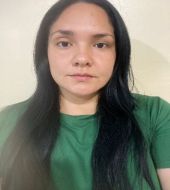Use of Artificial Intelligence in the Teaching of Natural Sciences in Upper Secondary Education
Main Article Content
Abstract
The integration of artificial intelligence (AI) into Natural Sciences education at the General Basic level offers an innovative alternative to longstanding challenges such as low student motivation and difficulties in grasping complex phenomena. This study aimed to design and validate a didactic proposal based on AI to foster personalized, interactive, and context-sensitive learning. A mixed-methods approach was employed, incorporating interviews, focus groups, and questionnaires administered to teachers and students at an educational institution in El Empalme, Ecuador. Qualitative findings revealed positive perceptions of AI, emphasizing its potential to enhance classroom engagement and support the understanding of abstract concepts. Quantitative data indicated a high level of interest in the subject and receptiveness toward intelligent technologies, although students demonstrated moderate familiarity with autonomous use of digital tools. The resulting proposal, comprising simulators, virtual labs, chatbots, and adaptive interactive resources, was validated by expert judgment and achieved high ratings in clarity, relevance, and pedagogical value. The study concludes that, when ethically and contextually implemented, AI can serve as a strategic ally in transforming science education, provided that teacher training and adequate infrastructure are ensured.
Downloads
Article Details

This work is licensed under a Creative Commons Attribution-NonCommercial-ShareAlike 4.0 International License.
1. Derechos de autor
Las obras que se publican en 593 Digital Publisher CEIT están sujetas a los siguientes términos:
1.1. 593 Digital Publisher CEIT, conserva los derechos patrimoniales (copyright) de las obras publicadas, favorece y permite la reutilización de las mismas bajo la licencia Licencia Creative Commons 4.0 de Reconocimiento-NoComercial-CompartirIgual 4.0, por lo cual se pueden copiar, usar, difundir, transmitir y exponer públicamente, siempre que:
1.1.a. Se cite la autoría y fuente original de su publicación (revista, editorial, URL).
1.1.b. No se usen para fines comerciales u onerosos.
1.1.c. Se mencione la existencia y especificaciones de esta licencia de uso.
References
Agra, G., Formiga, N., De Oliveira, P., Costa, M., Fernandes, M., & Nóbrega, M. (2019). Analysis of the concept of Meaningful Learning in light of the Ausubel’s Theory.. Revista brasileira de enfermagem, 72 1, 248-255 . https://doi.org/10.1590/0034-7167-2017-0691
Almasri, F. (2024). Exploring the impact of artificial intelligence in teaching and learning of science: A systematic review of empirical research. Research in Science Education, 54, 977–997. https://doi.org/10.1007/s11165-024-10176-3
Caisabanda, N., López, J., Lascano, D., & Quispilema, D. (2024). Inteligencia Artificial Aplicada a la Educación. Ciencia Latina Revista Científica Multidisciplinar. https://doi.org/10.37811/cl_rcm.v8i5.13405.
Cantero, C., Oviedo, G., Balboza, W., & Feria, M. (2020). Tecnologías emergentes en el proceso de enseñanza-aprendizaje: hacia el desarrollo del pensamiento crítico. Revista Electrónica Interuniversitaria de Formación del Profesorado. https://doi.org/10.6018/REIFOP.435611.
Cedeño Molina, A. P., Cevallos Sánchez, K. K., Marcillo Barcia, Y. del R., & Solórzano Mendoza, D. T. (2024). Estrategia didáctica para desarrollar el aprendizaje significativo de las Ciencias Naturales en los estudiantes de la Educación Básica Superior en la Unidad Educativa Atenas: Didactic strategy to develop meaningful learning of Natural Sciences in students of Higher Basic Education at the Atenas Educational Unit. Revista Cognosis, 9(2), 181–192. https://doi.org/10.33936/cognosis.v9i2.6496
Casal-Otero, L., Catalá, A., Fernández-Morante, C., Taboada, M., Cebreiro, B., & Barro, S. (2023). AI literacy in K-12: a systematic literature review. International Journal of STEM Education, 10, 1-17. https://doi.org/10.1186/s40594-023-00418-7
Castro, R. A. G., Chura-Quispe, G., Marreros, J. L., Llapa Medina, M. P., & Ramos, L. A. E. (2023). Factors affecting the individual interest of secondary school students in natural science lessons. Migration Letters, 20(S2), 1008–1017. https://doi.org/10.59670/ml.v20iS2.4140
Harry, A., & Sayudin. (2023). Role of AI in education. Injuruty: Interdisciplinary Journal and Humanity, 2(3), 260–268. https://doi.org/10.58631/injurity.v2i3.52
Henao Bonilla, A., & Gómez Salcedo, L. O. (2014). Elaboración de un ambiente virtual colaborativo usando eXe Learning para la enseñanza de Ciencias Naturales. [Elaborating of a collaborative-virtual-environment by using eXe Learning for teaching of Natural Sciences] Ventana Informática, (31), 56–66. https://doi.org/10.30554/ventanainform.31.520.2014
Hernández Sampieri, R., Fernández Collado, C., & Baptista Lucio, P. (2022). Metodología de la investigación: Las rutas cuantitativa, cualitativa y mixta (7.ª ed.). McGraw-Hill Education.
Jiménez Cruz, J. R. (2018). Introducción a la robótica y a las redes neuronales con los vehículos de Braitenberg. Pistas Educativas, 40(131), 176–189
León, N., & Rodríguez-Conde, M. (2024). Inteligencia artificial aplicada a la educación y la evaluación educativa en la Universidad: introducción de sistemas de tutorización inteligentes, sistemas de reconocimiento y otras tendencias futuras.. Revista de Educación a Distancia (RED). https://doi.org/10.6018/red.594651
Mariyono, D., & Nur Alif Hd, A. (2025). AI’s role in transforming learning environments: A review of collaborative approaches and innovations. Quality Education for All, 2(1), 265–288. https://doi.org/10.1108/QEA-08-2024-0071
Ossa, L., Rost, M., Lorenzini, G., Shaw, D., & Elger, B. (2022). A smarter perspective: Learning with and from AI-cases. Artificial intelligence in medicine, 135, 102458 . https://doi.org/10.1016/j.artmed.2022.102458
Poveda Aguja, F. A. (2014). Reflexión, acción y transformación en la enseñanza-aprendizaje en docentes y estudiantes de las instituciones educativas beneficiarias del Programa Computado-res para Educar con la inclusión de las tecnologías de la información y comunicación. Revista Virtual Universidad Católica del Norte, 43, 161-179 Recuperado de http://revistavirtual.ucn.edu.co/index.php/RevistaUCN/article/view/558/1104
Ramaila, S. (2022). Promoting Self-Regulated Learning In Natural Sciences Teaching Through Technology Integration. Education and New Developments 2022 – Volume I. https://doi.org/10.36315/2022v1end081.
Román-Graván, P., Mena-Guacas, A., Fernández-Márquez, E., & López-Meneses, E. (2024). Mapeo de las corrientes de investigación sobre Chat GPT aplicadas a la educación. Revista Interuniversitaria de Investigación en Tecnología Educativa. https://doi.org/10.6018/riite.590421
Ros, M. (2018). La universidad inteligente: La transición de los LMS a los Sistemas Inteligentes de Aprendizaje en Educación Superior. RED. Revista de Educación a Distancia, 9
Tafur, A., & Molina, R. (2023). Incidencia de la Inteligencia Artificial en la educación. Educatio Siglo XXI. https://doi.org/10.6018/educatio.555681




